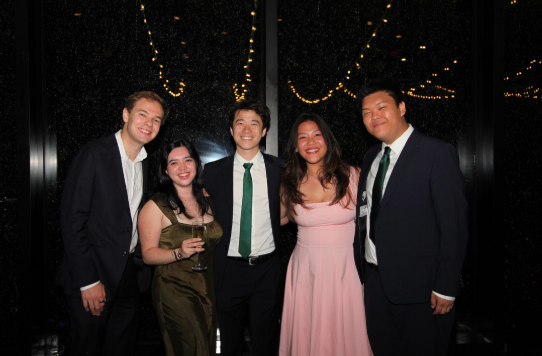Why Cobwebs Might Be Worth the Investment
- Brendan Franz
- May 26, 2018
- 2 min read
I could not stand them growing up, and until recently, I still cringed at the mere sight of a cobweb. I did not care how cool Spider-Man looked swinging from building to building in New York City; I just knew that spider silk and I did NOT mix. What I did not realize at the time was that the superficial ability of harnessing oneself from a skyscraper was in fact a play on spider silk’s novel properties.

Spider silk is an elastic and sticky material that is composed of viscoelastic glue-like glycoproteins surrounded by an aqueous solution [1]. It’s molecular makeup results in a material with a ridiculous amount of tensile strength, rivaling high-grade steel and fibers like Kevlar, which is used in bulletproof vests [2]. While researchers are still working on identifying viable ways to harvest the silk in large amounts, spider silk has begun to inspire innovative medical advices, adhesives, artificial implants, textiles and even automobile parts.
Now if spiders are still not your favorite organism, I encourage you to consider butterfly wings and their sheen, which has inspired color displays for e-readers or geckos, which have sticky feet that are ideal for adhesive design [3]. If you are a plant fanatic, read up on lotus leaves, which repel water so well that they are beginning to inspire the improvement of windshields and may even render them obsolete [4]. Our very own environment is fostering bio-inspired design in ways that are revolutionizing the biotechnology industry!
Bioinspiration is economically promising, sustainable and innovative. In a bit over 10 years, bioinspired innovation will account for over 400 billion dollars in the United States’ GDP [5]. Better yet, bioinspiration often offers the ingenuity needed to create novel solutions to many of the world’s problems.
For companies to remain cutting-edge and financially viable, I encourage you to explore the living world around us, as it may just be the reason why you can create the world's next big invention.
Harvard CBE can help your company understand your product strategy in the context of your competitors.
Augusta Uwamanzu-Nna is a Managing Director for CBE, and a junior at Harvard studying Bioengineering.


